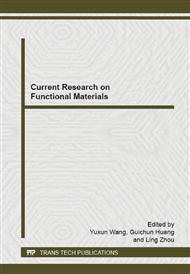p.444
p.450
p.456
p.461
p.466
p.473
p.482
p.489
p.495
Study on Performance of Sulfur Modified Asphalt
Abstract:
The study on the property of modified asphalt was based on sulfur modified asphalt,s environmental protection and microscopic analysis . The spectrophotometric,s method of methylene blue was adopted for testing release quantity because of the process of reaction producing hydrogen sulfide (H2S) gas between sulfur modifier agent and asphalt, the results showed that gas release quantity of environmental pollution were small which had good environmental protection performance; The analysis of SEM found modifier agent can be evenly dispersed in asphalt; The method of asphalt four components was used to study the compatibility of sulfur modified agent for asphalt, Modifier can absorb part of saturates and aromatics, however, colloid and asphaltene had no absorption; DSC showed that saturates and aromatics can be easy to react with modifier because their poor stability, while colloid and asphaltene were on the contrary.
Info:
Periodical:
Pages:
489-494
Citation:
Online since:
October 2014
Authors:
Price:
Сopyright:
© 2014 Trans Tech Publications Ltd. All Rights Reserved
Share:
Citation:


